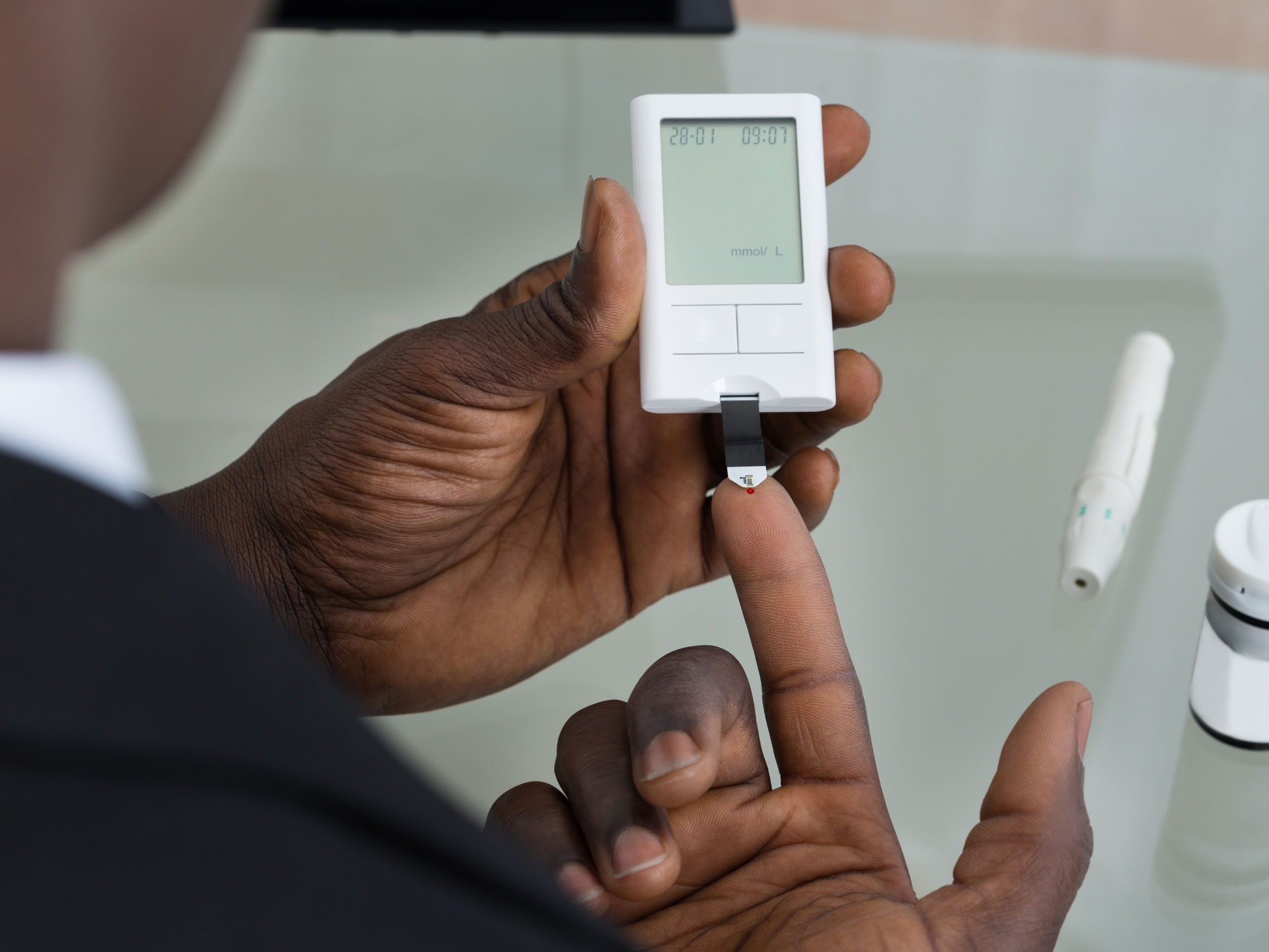Get Easy Health Digest™ in your inbox and don’t miss a thing when you subscribe today. Plus, get the free bonus report, Mother Nature’s Tips, Tricks and Remedies for Cholesterol, Blood Pressure & Blood Sugar as my way of saying welcome to the community!
New ways to prevent type 2 diabetes before it takes hold

Of the 30.3 million Americans with type 2 diabetes, 7.2 million remain undiagnosed.
This means that there are over 7 million walking time bombs out there, whose bodies are traveling a silent road toward heart disease, stroke, nerve damage, kidney failure, and blindness.
You could be one of them.
By the time the warning signs of elevated blood sugar show up, the damage has often already been progressing silently for years. And that’s a shame considering many health professionals agree that diabetes can be prevented, even reversed.
The American Diabetes Association recommends that adults age 45 and older get screened by their physician for type 2 diabetes every three years.
Screening should also happen at any age for those with risk factors for the disease:
- A family history of diabetes
- A sedentary lifestyle
- A history of blood glucose problems
- High blood pressure
- Being of African-American, Hispanic-American, Native-American, Asian-American, or Pacific Islander ancestry
- Cholesterol problems
- A history of vascular disease
Presently, there are three ways that doctors test for diabetes, but in a study involving 9,000 adults, one of these tests failed to detect 73 percent of cases of diabetes.
What if there were a test that could be done much earlier and could identify those people who were at high risk, allowing them to take action sooner and prevent diabetes and its deadly complications?
Several recent studies are on the trail of quicker, more accurate testing. Here are two making big steps in that direction…
Preventing diabetes that starts with motherhood
Researchers at the University of Toronto looked at the metabolic signatures of over a thousand women with gestational diabetes, to try and predict which women were likely to go on to develop full-blown type 2 diabetes after giving birth.
Gestational diabetes is a glucose intolerance that’s first identified during pregnancy.
It occurs in three to 13 percent of all pregnant women and increases a woman’s risk of developing type 2 diabetes by 20 to 50 percent within five years after pregnancy.
Typically, diabetes, including gestational diabetes, is diagnosed by measuring blood sugar (glucose) levels.
In this study, however, the researchers were able to identify several other metabolites (by-products of metabolism) that revealed early changes pointing to future diabetes risk, long before any changes in blood glucose were detectable.
Using this method, they predicted with 83 percent accuracy which women would go on to develop diabetes later on. That means those patients can begin steps that could help them avoid the disease, like diet and intermittent fasting.
Looking to the gut to prevent diabetes
“This cohort is probably the best-studied group of people on the planet.”
Michael Snyder, director of the center for genomics and personalized medicine at Stanford University School of Medicine, was talking about a group of 106 people that he and his team followed for four years.
The purpose was to see if there were a way to predict insulin resistance by looking at a person’s microbiome, rather than by using the very expensive, six-hour test presently used to detect insulin resistance.
By using nasal swabs, stool samples, and blood tests, the 106 subjects had their microbiomes profiled every three months, especially when they were sick or under great stress.
In this way, Snyder’s team tracked how these events impacted the subjects’ immune systems and the contents of their microbiome.
Related: The bacteria that could give you diabetes
It became clear that people with insulin resistance tended to have different gut microbes. This means that “we can predict an insulin resistance signature from the microbiome.”
Snyder has co-founded a company to develop a test for pre-diabetes that screens people’s microbiomes for predictors.
“Having an assay for insulin resistance could be very, very powerful in catching people who might develop diabetes much earlier,” says Snyder.
“That’s important because managing pre-diabetes before it becomes diabetes is critical since it’s hard to reverse once diabetes occurs.”
What to watch out for in the meantime
For now, there are ways you can protect yourself and prevent diabetes.
Know the warning signs.
- Frequent urination
- Extreme thirst
- Constantly being hungry
- Fatigue
- Blurry vision
- Slow healing of wounds
- Patches of dark skin
- Itching and yeast infections
Control your diet. Focus on foods with a low glycemic index, and avoid those high-sugar snacks.
Exercise! Staying active may be the best overall way to prevent diabetes.
Editor’s note: Most people with type 2 diabetes can reduce the severity of symptoms or even eliminate them altogether by making simple lifestyle changes. And you can find them in Forbidden Secrets From Nature’s Pharmacy to Reverse Diabetes and Blood Sugar Problems! For a preview, click here!
Sources:
- Longitudinal multi-omics of host–microbe dynamics in prediabetes — Nature
- How the Microbiome Might Predict Diabetes, Premature Birth and Gut Diseases — Time
- A better way to predict diabetes — University of Toronto
- What are the early signs of type 2 diabetes? — Medical News Today













